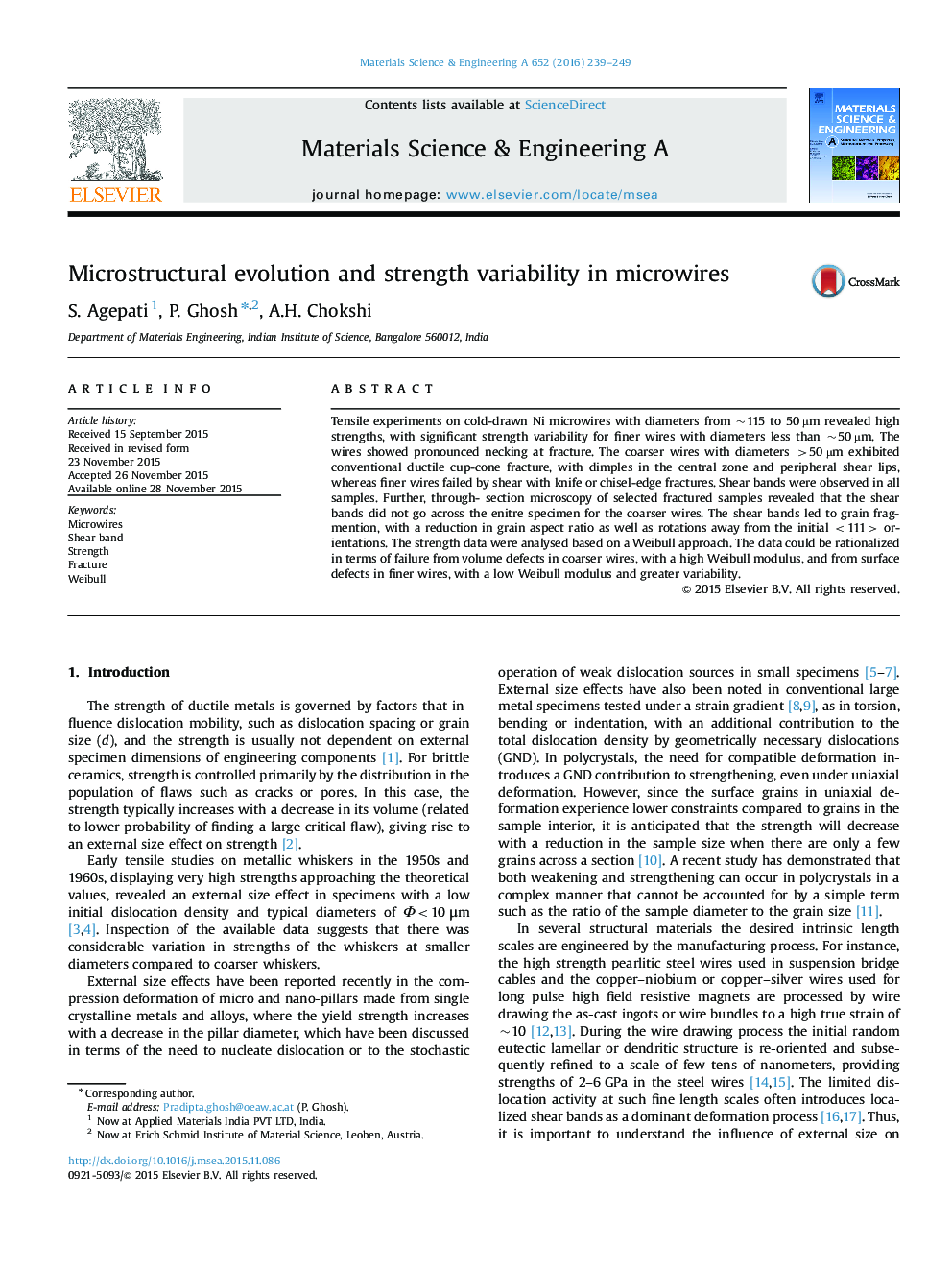| Article ID | Journal | Published Year | Pages | File Type |
|---|---|---|---|---|
| 1573826 | Materials Science and Engineering: A | 2016 | 11 Pages |
Abstract
Tensile experiments on cold-drawn Ni microwires with diameters from ~115 to 50 µm revealed high strengths, with significant strength variability for finer wires with diameters less than ~50 µm. The wires showed pronounced necking at fracture. The coarser wires with diameters >50 µm exhibited conventional ductile cup-cone fracture, with dimples in the central zone and peripheral shear lips, whereas finer wires failed by shear with knife or chisel-edge fractures. Shear bands were observed in all samples. Further, through- section microscopy of selected fractured samples revealed that the shear bands did not go across the enitre specimen for the coarser wires. The shear bands led to grain fragmention, with a reduction in grain aspect ratio as well as rotations away from the initial <111> orientations. The strength data were analysed based on a Weibull approach. The data could be rationalized in terms of failure from volume defects in coarser wires, with a high Weibull modulus, and from surface defects in finer wires, with a low Weibull modulus and greater variability.
Related Topics
Physical Sciences and Engineering
Materials Science
Materials Science (General)
Authors
S. Agepati, P. Ghosh, A.H. Chokshi,
